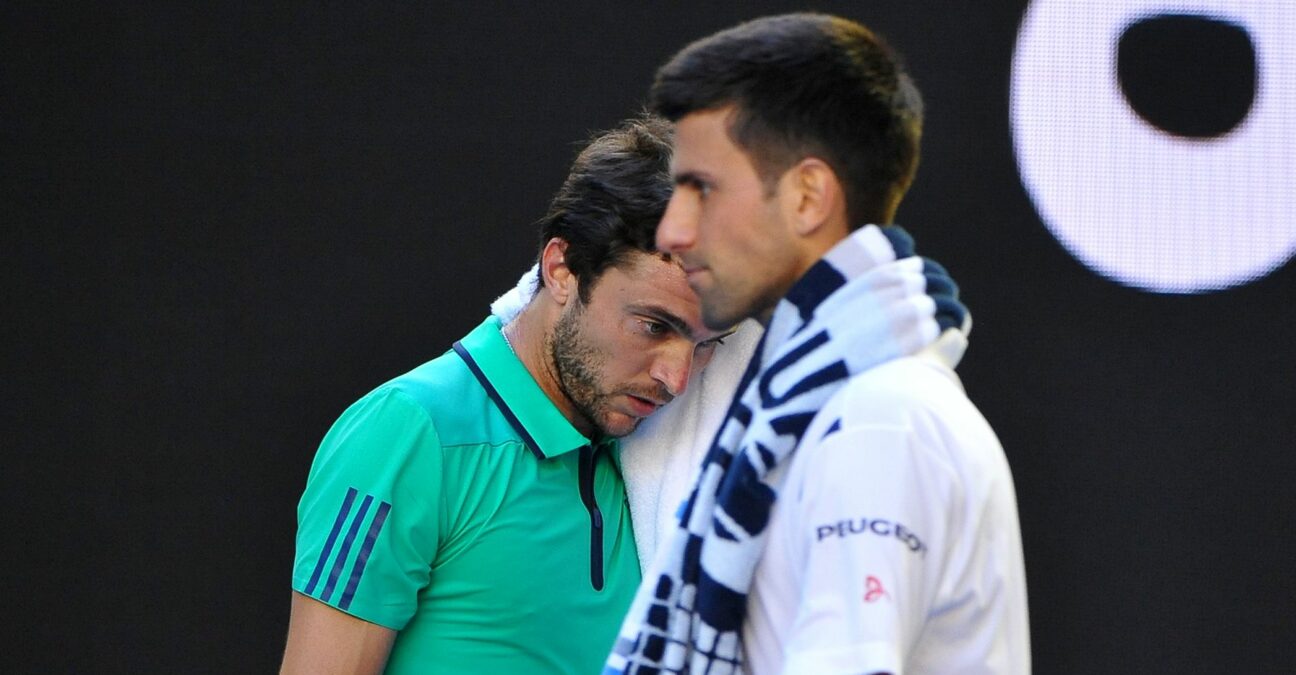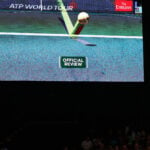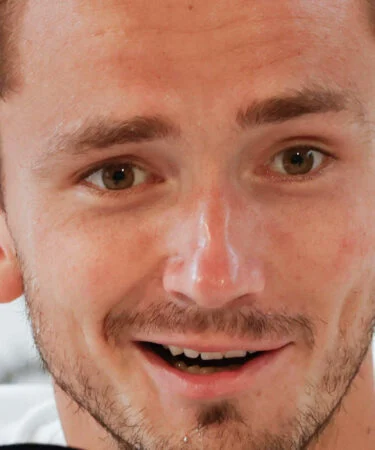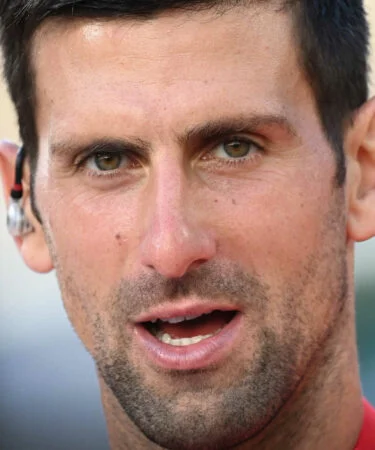A deep dive into the unforced error: an outdated, misleading statistic or a necessary evil?
Is it time for tennis to scrap the unforced error for something less prone to human judgement?
 Novak Djokovic recorded 100 unforced errors in this match (Tennis Mag/Panoramic)
Novak Djokovic recorded 100 unforced errors in this match (Tennis Mag/Panoramic)
At the Australian Open in 2016, Novak Djokovic came off court after a gruelling four-hour, 16-minute marathon with Gilles Simon, relieved to get through but slightly concerned about his form after a match in which he was credited with 100 unforced errors. He needn’t have worried, going on to win the title yet again, beating Andy Murray in the final.
Statistics tell a story, but not the whole story. And when the statistic concerned is “unforced errors”, the story begins to get confusing.
Origins of the unforced error statistic
The unforced error was introduced to tennis in the 1980s by the late Leo Levin, a college player in the US, who was instrumental in tracking and developing the stats that are now commonplace in tennis. Levin charted winners, unforced errors and forced errors.
Winners are simple to calculate but unforced errors, particularly, are problematic. For a start, unforced errors are decided by humans, who, by definition, are fallible. They might be tired that day, or hungover, or have had a row with their partner and their mind is not entirely on the job.
Secondly, what even is an unforced error? No stroke in tennis is unaffected by the situation or the opponent; you could say the serve should be, but even then, what about the pressure of the occasion, the score, the moment, the opponent or their quality of return?
O’Shannessy: “Tennis is a game of errors”
Craig O’Shannessy, a strategist for the ATP Tour and contributor to the New York Times, believes the unforced error has changed the understanding of tennis, for the worse.
“What it does is it alters the paradigm of how we should view the sport,” he told Tennis Majors in an interview. “That’s number one. The paradigm we should view tennis (through) is that it is a game of errors. It’s 70 percent errors at the pro level. It’s conservatively 75 percent errors at a recreational level.”
O’Shannessy says he understands what Levin was trying to do, having spoken to him about it all a few years ago. “I mean, he’s a 19-year-old college kid trying to help his team, and he’s throwing mud against the wall to see what sticks. The problem is that in baseball, you make an error a week; in tennis, you make an error a minute. So it’s the worst possible way to look at a point, to say you shouldn’t miss in any given point.
“First of all, it’s difficult to keep the ball going back and forth. It’s just not easy. It’s a fact that errors are an inherent critical part of our sport and in fact that in order to improve as you push those limits, it’s the good error that helps you improve.
“As a coach, I’m always searching, when I’m feeding balls to a player, helping them improve their technique. I am searching for the good error first. That all precedes the good stuff.”
Djokovic: “There are a lot of factors that affect unforced errors”
At the Monte-Carlo Masters, Djokovic laughed as he recalled the match with Simon in Melbourne. “I don’t want to think about unforced errors, please,” he said, smiling.
“Of course, the lower down the number is, the better, I guess the better you are off. But then it does really depend on the given day, on the opponent that you have across the net, whether the opponent is requiring you to be more aggressive or more conservative in your game plan. So there are a lot of factors that really affect that.”
Daniil Medvedev said unforced errors are an indicator of how someone is playing but said there are many reasons why it’s far from perfect as a statistic.
“The thing is that the person who types them can be different,” he said in Monte-Carlo. “Because they decide what’s an unforced error. And sometimes in my view, for example, when two players that are really strong from baseline, sometimes you have this rallies, long rallies and then you get an easy shot. But after 20 shots where your legs are burning and you reset, in my opinion, that’s not enough for an unforced error.”
Coaches’ study illustrates the problem
O’Shannessy highlights the issue by relaying a story of three coaches’ conferences, where he showed the participants 10 points between Rafael Nadal and John Millman from the US Open and asked them each to vote online.
“As a group they had to put in ‘forced error’ or ‘unforced error’, and submit,” he said, of the first conference, held in Germany. “As a 950-strong group, they only agreed three times with what was going on. I went and did the exact same test at the Australian Overseas Coaches Conference. They only agreed with four. I did it in the Kansas City US PTA regional meeting. They agreed with four as well.
“As a coaching group, we are the experts on this. We know with 100% facts that we know the difference between a forehand and a backhand, we know the difference between a winner and an error. We need something in our sport that is 100 percent a lock. We know it’s an error. We know it’s a winner. So what I’ve done with my work, I have what I call a match intelligence report. I’ve just reduced it down to winners and errors, not even forced and unforced, just winners and errors.”
Commentators “missing a third of the sport”
The emphasis on unforced errors is exacerbated by commentators, who, understandably, use the stats they are provided with.
“There’s a lot of missing happening at the start of the point,” O’Shannessy said. “And by labelling it an unforced error, we’ve always kind of looked at the short rallies as the failure to reach the promised land of what we consider is a good rally, which is a longer rally. But nine-plus rallies happen only 10 percent of the time.”
“I looked at all four grand slams in a season. Wimbledon is different – they have more forced errors than they will have unforced errors, even though 1-4 (points decided in 1-4 shots) is 69 or 70 percent in Australia, 71 percent at Wimbledon. When you combine all four slams, forcing errors is number one, and that’s mainly from Wimbledon.
“Essentially you can say all three, an unforced error, a forced error and a winner, are all in the same ballpark. Well, commentators are constantly mentioning two of them and leaving out a third of the sport, and also leaving out the number one way you want a point to end.
“So we can get it into our psyche that it’s all about the unforced error and it’s not about the forced error, because we don’t even see it. It’s not a line item in our sport (with the exception of inside match stats at Grand Slams).”
Could AI dictate the future for tennis statistics?
While forced errors are surely a more accurate indicator of how points are won, Djokovic said he thinks that the unforced error – and all statistics – will be taken out of the hands of humans at some stage.
“I think eventually we are going to have artificial intelligence doing that, I think it’s just a matter of time,” he said. “And I think that probably would be more accurate. I think very, very soon, I mean, considering that we live in such a technological era where artificial intelligence is taking over many things, I don’t see a reason why data wouldn’t be something where we would use that.”
O’Shannessy said the ATP Tour, in particular, appreciate the importance of the forced error compared to the unforced error and believes change is coming, if not immediately.
“I write all my analysis pieces with all of this, so the ATP love it and Infosys love it, they’re very much embracing everything. But I’ve told both of them get rid of the unforced error and they’re like, ‘Oh, oh, oh.’ We need to come up with more (evidence) like the German study.
“If the Germans don’t know, we’re just guessing,” he said.
















